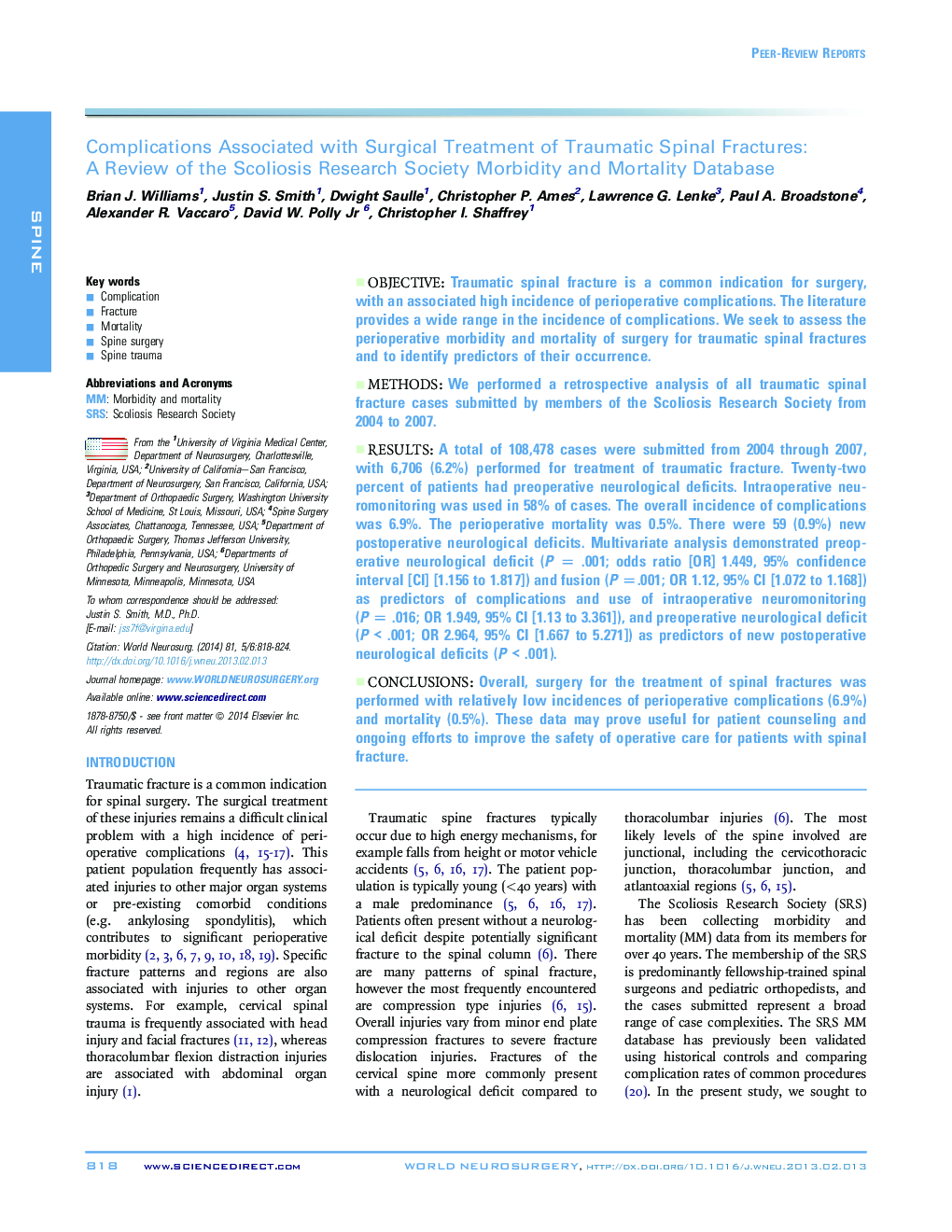| Article ID | Journal | Published Year | Pages | File Type |
|---|---|---|---|---|
| 6045837 | World Neurosurgery | 2014 | 7 Pages |
ObjectiveTraumatic spinal fracture is a common indication for surgery, with an associated high incidence of perioperative complications. The literature provides a wide range in the incidence of complications. We seek to assess the perioperative morbidity and mortality of surgery for traumatic spinal fractures and to identify predictors of their occurrence.MethodsWe performed a retrospective analysis of all traumatic spinal fracture cases submitted by members of the Scoliosis Research Society from 2004 to 2007.ResultsA total of 108,478 cases were submitted from 2004 through 2007, with 6,706 (6.2%) performed for treatment of traumatic fracture. Twenty-two percent of patients had preoperative neurological deficits. Intraoperative neuromonitoring was used in 58% of cases. The overall incidence of complications was 6.9%. The perioperative mortality was 0.5%. There were 59 (0.9%) new postoperative neurological deficits. Multivariate analysis demonstrated preoperative neurological deficit (PÂ = .001; odds ratio [OR] 1.449, 95% confidence interval [CI] [1.156 to 1.817]) and fusion (PÂ =.001; OR 1.12, 95% CI [1.072 to 1.168]) as predictors of complications and use of intraoperative neuromonitoring (PÂ =Â .016; OR 1.949, 95% CI [1.13 to 3.361]), and preoperative neurological deficit (P < .001; OR 2.964, 95% CI [1.667 to 5.271]) as predictors of new postoperative neurological deficits (P < .001).ConclusionsOverall, surgery for the treatment of spinal fractures was performed with relatively low incidences of perioperative complications (6.9%) and mortality (0.5%). These data may prove useful for patient counseling and ongoing efforts to improve the safety of operative care for patients with spinal fracture.
